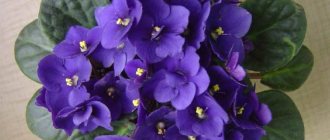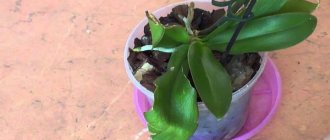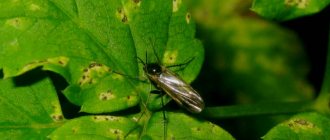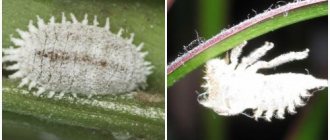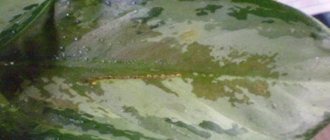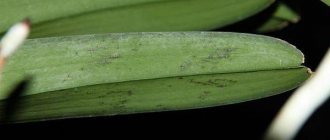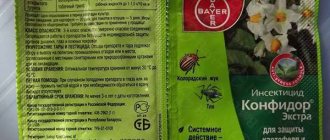Why do spots appear on indoor plants? (2 photos)
The color of leaves can also be affected by various diseases and pests that are dangerous to plants. So, with Alternaria blight, a fungal disease, the leaves, tubers and stems turn brown. The disease appears almost at the roots, and then rises higher and higher. Alternaria blight progresses especially rapidly during sudden temperature changes. According to experts, the best prevention of this disease is regular ventilation. In addition, high shoot densities should not be allowed to eliminate the source of bacteria.
With anthracnose, the spots on the affected leaves can have different shades: from gray-yellow to brown and purple. They may subsequently turn brown. Then spores appear on the leaves, and the damaged surface turns from smooth to rough. Gardeners emphasize that this disease develops at high humidity and elevated temperatures.
Downy mildew is another disease that affects indoor plants. First, yellow spots appear on the upper part of the leaves, which subsequently turn brown, and soon turn brown. A gray coating appears on the lower part of the surface, turning black. In the later stages, darkened vessels can be noted on the cut leaves, indicating an advanced disease.
Powdery mildew is similar in symptoms to downy mildew, but in this case the blackness spreads over the entire leaf, covering it on both sides. The flowers located next to the leaves dry out and fall off. The development of the disease is provoked by a combination of high humidity and warm air. Also, the disease can develop due to lack of air, but its access must be controlled so that the plant does not suffer from drafts.
Infection brought in from a window, high humidity and lack of air are the causes of gray rot. Because of this disease, the stem is damaged, which becomes covered with a grayish-olive coating. Later the disease spreads to leaves and flowers. In this case, the spots resemble dry rot or loose cotton wool.
As for pests, enemies such as aphids, cyclamen mites, nematodes, mealybugs, scale insects and caterpillars can contribute to the appearance of stains. To protect the plant from them, it is necessary to regularly carry out preventive measures. In particular, if the pots are not used for the first time, they should be thoroughly washed and filled with purchased soil. It is a good idea to heat homogeneous soil in the oven, which will destroy insects and their larvae.
Experts recommend isolating a newly planted plant for a month and regularly inspecting it for the presence of harmful insects. After about a month, the flower can be joined to others. At the same time, if pests make themselves known, you need to wipe the leaves weekly with a soft damp cloth or soap diluted in water.
Soil coloring
Soil color is the most observable physical characteristic used in soil morphology. It is widely used to assign names to soils in the soil classification (chernozem, red soil, yellow soil, serozem, etc.). The color of soil depends on its chemical composition, soil formation conditions and moisture.
Three groups of substances are most important for soil coloring. Humic substances give the soil a black, dark gray and gray color; oxidized iron compounds are red, orange and yellow, and reduced iron compounds are blue and bluish in color; silica, calcium carbonate, kaolinite, as well as gypsum and readily soluble salts - white and whitish in color. The different combinations of these groups of substances determine a wide variety of soil colors and shades.
The upper horizons are dark colored with humus. The more humus the soil contains, the darker the horizon. The presence of iron and manganese gives the soil brown, ocher, and red tones. Whitish, white tones suggest the presence of processes of podzolization (washing out the decomposition products of the mineral part of the soil), solodization, salinization, carbonization, i.e. the presence of silica, kaolin, calcium and magnesium carbonate, gypsum and other salts in the soil.
The white, whitish color is caused by accumulations of amorphous quartz SiO2, easily soluble salts, carbonates, chalk, accumulations of white kaolinite clays, Al oxides - bauxite, gypsum. The brown color is caused by iron-organic compounds, humus fulvates, and clays (illite, hydromicas). The brown color of clays is due to iron oxide hydrates with a variable amount of constitutional moisture and iron-organic films covering clay particles. The red color is caused by the presence of iron hydroxides, the mineral goethite, and hematite. The more oxidized the thickness, the brighter the color. Most often, ocher streaks are observed. A gray, bluish color is observed in silt-marsh soil, since oxygen is poorly soluble in water and iron is in a reduced form. In such soils, olive, bottle, and bluish-greenish colors are found, which is associated with the presence of ferrous iron phosphates.
Soils are rarely any one pure color. Typically, the color of soils is quite complex and consists of several colors (for example, gray-brown, whitish-gray, reddish-brown, etc.), and the name of the predominant color is placed in last place.
When determining soil color in field conditions, it is necessary to take into account soil moisture and the degree of illumination of the soil section. Wet soil is darker in color than air-dry soil. In the shade, the soil appears darker than in the sun.
Soil color is the most observable physical characteristic used in soil morphology. It is widely used to assign names to soils in the soil classification (chernozem, red soil, yellow soil, serozem, etc.). The color of soil depends on its chemical composition, soil formation conditions and moisture.
Three groups of substances are most important for soil coloring. Humic substances give the soil a black, dark gray and gray color; oxidized iron compounds are red, orange and yellow, and reduced iron compounds are blue and bluish in color; silica, calcium carbonate, kaolinite, as well as gypsum and readily soluble salts - white and whitish in color. The different combinations of these groups of substances determine a wide variety of soil colors and shades.
The upper horizons are dark colored with humus. The more humus the soil contains, the darker the horizon. The presence of iron and manganese gives the soil brown, ocher, and red tones. Whitish, white tones suggest the presence of processes of podzolization (washing out the decomposition products of the mineral part of the soil), solodization, salinization, carbonization, i.e. the presence of silica, kaolin, calcium and magnesium carbonate, gypsum and other salts in the soil.
The white, whitish color is caused by accumulations of amorphous quartz SiO2, easily soluble salts, carbonates, chalk, accumulations of white kaolinite clays, Al oxides - bauxite, gypsum. The brown color is caused by iron-organic compounds, humus fulvates, and clays (illite, hydromicas). The brown color of clays is due to iron oxide hydrates with a variable amount of constitutional moisture and iron-organic films covering clay particles. The red color is caused by the presence of iron hydroxides, the mineral goethite, and hematite. The more oxidized the thickness, the brighter the color. Most often, ocher streaks are observed. A gray, bluish color is observed in silt-marsh soil, since oxygen is poorly soluble in water and iron is in a reduced form. In such soils, olive, bottle, and bluish-greenish colors are found, which is associated with the presence of ferrous iron phosphates.
Soils are rarely any one pure color. Typically, the color of soils is quite complex and consists of several colors (for example, gray-brown, whitish-gray, reddish-brown, etc.), and the name of the predominant color is placed in last place.
When determining soil color in field conditions, it is necessary to take into account soil moisture and the degree of illumination of the soil section. Wet soil is darker in color than air-dry soil. In the shade, the soil appears darker than in the sun.
Underlying rock.
Horizon D (R) is the underlying rock that lies below the parent (soil-forming) rock and differs from it in its properties.
Soil profile of hydromorphic soils, i.e. soils, the formation of which occurs in conditions of close proximity to groundwater. In this case, the process of soil formation occurs under the influence of groundwater, which periodically or constantly enriches the soil layer with certain chemical elements and creates a specific geochemical environment. The soil moisture regime under these conditions corresponds to effusion or stagnation.
When groundwater is close to each other and its capillary rise into the soil column, various compounds fall out in approximately the same sequence as during the downward movement of water. However, while with downward movement less soluble compounds are located closer to the surface, with upward movement of groundwater the picture is the opposite - more soluble compounds are close to the surface or located directly on it.
The soil profile of hydromorphic soils consists, firstly, of a more or less pronounced humus-accumulative part, and secondly, of a system of mineral-accumulative horizons, each of which is named by the compound that composes it. In Fig. 2, carbonate, gypsum and sulfate-sodium horizons are distinguished (from bottom to top).
In addition to the two main types of soil profile structure - automorphic and hydromorphic, there are numerous cases of transitional structure in nature, this is explained by the change in conditions of automorphic and hydromorphic soil formation.
In addition to these horizons, transitional horizons are distinguished, for which double designations are used, for example, A1A2 is a horizon stained with humus and has signs of podzolization (leaching of elements), A2B is a horizon that has the features of the eluvial horizon A2 and illuvial B, A1C is a transitional horizon from humus to maternal breed, etc.
Secondary features are indicated by an index with an additional small letter, for example Bg - illuvial horizon with gley spots, Ck - carbonate soil-forming rock, etc.
In addition to designating a horizon with an index, soil scientists also necessarily use verbal names for these horizons: humus, podzolic, gley, peaty, solonetzic, illuvial-humus, buried, etc.
Usually the transition between genetic horizons is gradual, so the boundary between horizons is, to a certain extent, arbitrary and is represented not by a line, but by some transitional strip. Sometimes the transition between horizons is clear, but the boundary is not necessarily smooth, but tongue-shaped. In this case, the mass of the upper horizon in the form of tongues and streaks extends into the boundaries of the underlying genetic horizon. Taking into account soil density greatly facilitates the identification of horizons and the establishment of their boundaries.
The above system for identifying soil horizons and their letter designations is the most common in our country, but besides it there are many other similar systems. A system of more complex indexing of soil profile horizons is currently being developed.
Soil porosity.
Soil particles and structural elements that make up the soil are adjacent to each other not with all their planes, but only with individual points or edges, as a result of which the soil itself acquires the character of a porous body, penetrated by a whole system of cracks, pores, cells, and voids. The total volume of all these air pores, cavities, cracks, etc. in a certain volume of soil is called porosity or porosity of the soil. The total volume of soil pores ranges from 25 to 60% of the soil volume.
The porosity of the soil is greatly influenced, first of all, by the structural structure of the soil: the more structural the soil, the greater the overall porosity (since, in addition to the pores contained in the lumps, these soils have spaces between the structural units). Any destruction of the soil structure, which may occur as a result of the impact of natural factors on the soil or due to improper soil cultivation, leads to a decrease in the overall porosity of the soil. Soil organic matter also has a noticeable effect on soil porosity: the more organic matter, the greater the porosity (for example, the porosity of sand is about 30%, and that of peat is about 85%). Porosity changes noticeably depending on the depth of the soil layer: in the upper layers it is greater, in the lower layers it is less. This is explained by the higher humus content and better structure of the upper horizons, the greater impact of plant roots and burrowing animals on the upper layers of soil, as well as lower pressure from the overlying layers.
The sizes of soil cavities vary, ranging from the thinnest, so-called capillaries, to pores with a diameter of 10 mm and larger. In this regard, in addition to the general porosity, a distinction is also made between capillary and non-capillary porosity of the soil. In any soil there are always both types of porosity, and the predominance of one or another type depends on the mechanical and structural composition of the soil.
Each type of porosity has a different significance in soil-forming processes: capillary porosity, usually filled with water, impedes the free access of air into the soil and the movement of atmospheric moisture from the upper horizons to the lower ones. The presence of non-capillary porosity eliminates these undesirable phenomena, creating favorable conditions for both soil-forming processes and plant development. See also SOIL TYPES.
Why rust appears on plants and how to deal with it
The reasons for the appearance may be different, but you must understand that this is a fungal disease. The fungus appears in damp and warm places where there is no direct sunlight. You may notice that rust does not appear on plants that stand on windowsills on the sunny side; most often this disease manifests itself in darkened corners. To prevent this from happening, you can simply ventilate the room to normalize the humidity. But if the problem has already appeared, then you will have to look for effective ways to combat it.
Most often, indoor plants suffer from this disease due to the fault of the owners themselves. To prevent rust from ever appearing, it is enough to treat indoor plants once in the spring with a one percent solution of Bordeaux mixture. It is better to do this procedure outside. This way you disinfect the plant and eliminate the possibility of various fungal diseases.
If there is already rust on the leaves, treatment must be carried out with special means. First of all, quarantine these plants to prevent the fungus from spreading to other pots. Next, all affected leaves must be torn off and destroyed by burning. The entire plant can be treated with Bordeaux mixture or sulfur powder. After 15 days of quarantine, the flower can be returned to its place. You can also prepare your own disinfectant that will destroy the fungus. To do this, follow these steps:
- Heat 5 liters of purified water.
- Dissolve 200 grams of green soap.
- Add 15 grams of copper sulfate to the resulting mixture.
This product can be used to treat not only the affected plant, but also other pots in the room. After all, they may already be infected, but the fungus has not yet shown itself. Ventilate the room where the infected plant was, this will normalize the humidity and destroy the disease.
Soil profile.
When examining a sufficiently deep soil section, one can see that the soil stratum has a layered structure.
Also on topic:
THE SOIL
This pseudo-layering is due to the division of the soil thickness into soil horizons , each of which is more or less homogeneous in mechanical, mineralogical, chemical composition, physical properties, structure, color and other characteristics. Soil horizons are gradually separated during the process of soil formation, hence their other name – “genetic ” horizons. However, even in fully formed soils, horizons, as a rule, do not have a sharp boundary and gradually merge into one another. The totality of genetic horizons forms a soil profile .
The principle of dividing the soil strata into genetic horizons was first established by V.V. Dokuchaev, and he also introduced the first letter designations for them.
Also on topic:
HUMAN IMPACT ON SOIL
In different types of soils, genetic horizons differ significantly, but as a first approximation, two types of soil profile structure are distinguished - automorphic and hydromorphic.
Two systems of symbols for genetic soil horizons: without brackets the designation of the horizon adopted in our country is indicated; in brackets the designation of the horizon adopted by the International Society of Soil Sciences is indicated (the International Association of Soil Science was founded in 1924, its members are scientific institutions and scientists from more than 100 countries, the seat of the society is Amsterdam).
What do summer residents face when decorating their lawns?
However, now the relevance of vegetable gardens is becoming a thing of the past; many city residents who go to their dachas for the weekend just want to relax, lying in a hammock with a book or having a picnic in their own garden. Accordingly, most of their plots are occupied by lawns or lawns. And many of them have to deal with phenomena that are not entirely clear and sometimes even annoying.
For example, where does the brown spot in the middle of the lawn come from? And if the whole lawn is covered with them, then what does that mean? Is this a sign of something bad or not?
For what reasons do the tips of leaves dry out?
There are reasons why indoor plants develop dark tips on their leaves. Often such problems can be easily corrected, but sometimes there is a long struggle ahead for the survival of the flower. The main causes of common diseases are:
- Watering with tap water. The most common mistake that can lead to dry leaf tips. Tap water contains chemicals fluorine and chlorine, which, rising from the roots into the leaves, cause burns to the latter.
- Flooding or insufficient watering of the soil. Darkening of the tips of the greens may indicate that the flowers are receiving too much or not enough water. Excess moisture causes rotting of the roots, which turns into rotting of the greens. Overdrying the earthen clod causes the plant to dry out.
- Pests. Houseplants are often attacked by pests, of which there are many. When a plant is attacked by insects, the ends of the leaves also turn dark brown.
- Dry air. Those plants that naturally grow in areas with high humidity have difficulty withstanding dry air. If you water excessively, the situation will not improve, but, on the contrary, it will get worse, because the roots rot, therefore, very little water reaches the leaves.
- Fertilizers. Drying out the tips of the leaves can cause excessive use of fertilizers.
Soil density
is the integrated density of all components of its solid phase - various minerals and organic substances.
Dry soil density:
1). Friable composition - the soil is free-flowing, individual particles are not cemented together.
2). Loose constitution - a shovel easily penetrates the soil at full “bayonet”, the soil is well structured, but the structural aggregates are poorly cemented among themselves.
3). Compacted structure - the shovel easily enters the soil at a “half bayonet” level, the knife easily enters the wall of the cut, the soil crumbles into structural and mechanical components, and has weak cohesion when wet.
4). Dense build - a shovel or knife hardly penetrates the soil to a depth of 4-5 cm, the soil is difficult to break with your hands; in a dry state it is monolithic, knocked out in large blocks, in a wet state it is a viscous mass.
5). Very dense (fused) build - almost impossible to dig with a shovel (goes into the soil no deeper than 1 cm), you need a crowbar and a pick. In the dry state it is monolithic, coarse, the knife does not enter the cut wall, in the wet state it is very viscous and elastic.
The composition of soil depends on its mechanical and chemical composition and on its moisture content. This property is of great practical importance in agriculture and characterizes it from the point of view of the difficulty of processing.
Within a soil profile, soil composition (i.e., its density and porosity) can vary greatly. The upper humus-accumulative horizon is most often characterized by a loose composition and large inter- and intrastructural porosity. The composition of the illuvial horizon is, as a rule, more dense and fractured.

